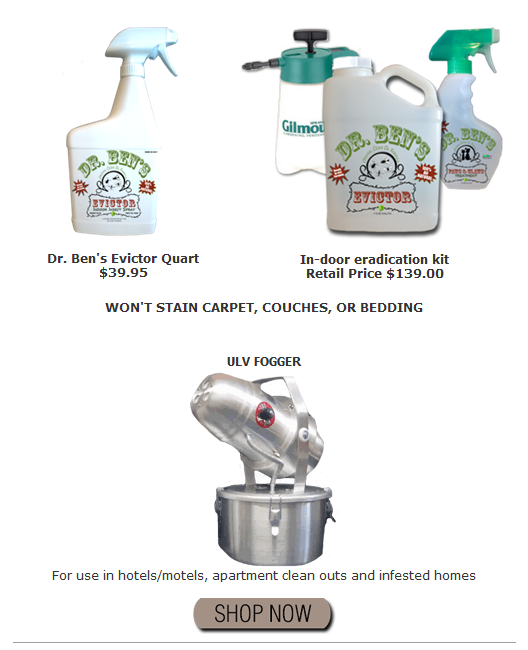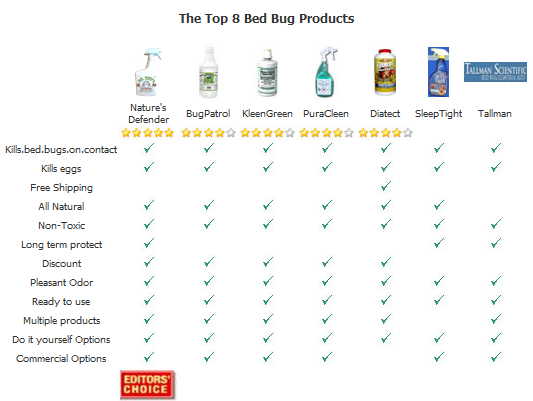Bedbugs

![]()
Can Cats and Dogs Spread Bedbugs?
With the bedbug epidemic rising out of control, it’s important to consider what role pets play in attracting and distributing bedbugs. Can bedbugs bite your dog or cat? Can pets transport bedbugs from the yard? Are homes with pets more prone to bedbug infestations and more resistant to treatment?
The good news is that bedbugs aren’t interested in pet food or pet waste. They only want blood, and they strongly prefer to bite humans because it’s difficult for them to extract fluid through fur. The bad news is that ANY warm blooded animal living in your home can act as a magnet to lure bedbugs out of hiding and disperse them to areas they normally wouldn’t go.
The steps you take to protect your bedroom against infestation will almost certainly drive bedbugs to other areas of your home in search of food. Factors such as body heat and pheromones will guide bedbugs to areas where pets congregate and relax. That’s bad news for you and good news for your local pest control operator. The difference between treating one room and treating multiple rooms can equal thousands of dollars.
Make no mistake. Bedbugs can and will feed upon animals if human counterparts are unreachable due to factors such as pesticides and bed protection measures. Pets who display scabs or bald spots from flea and mite irritations are all the more susceptible to bedbug bites. The most vulnerable place on a dog’s body is the belly because it’s not as furry as other body parts, and it often comes in contact with the ground. A bedbug can hitch a ride from the yard to your home using your dog’s exposed skin as a vehicle, but this is a relatively small concern because bedbugs only stay on their hosts long enough to feed. It’s far more likely for pets to transport bedbugs within the home.
Most pesticides designed to kill and repel bedbugs aren’t safe for use on or near animals. The grand exception is cedar oil. When applied to human or pet quarters, it kills bedbugs on contact and creates a lasting barrier that discourages new insects from entering sprayed territory. It can also be applied directly to human skin or animal fur to kill fleas, ticks, lice and mites.
At the forefront of the cedar oil movement is a company based in the heart of Texas and marketed at. Their product is endorsed by Animal Wellness Magazine and recognized by the U.S. Department of Agriculture as the number one organic pesticide formula, superior to chemical counterparts. When it comes to bedbugs, it’s the product of choice for major hotels because it has residual effects that repel bugs long after application, and it doesn’t stain carpets or bedding. Last year alone, one of the most prominent pest control companies in the United States ordered 5,000 gallons of the substance.
The following guide was developed to address the special needs of pet owners who wish to stop the cycle of attraction and disbursement. With proper attention to detail, it’s possible to save thousands of dollars in extermination costs.
Don’t stop following the rules just because you no longer see bugs or experience bites. A well fed bedbug can live up to six months, while a dormant bedbug can survive up to 18 months without a blood meal. A female bedbug can lay 5 eggs per day and 500 in her lifetime. An organized plan of action is critical for pet owners who wish to contain infestations before they magnify exponentially.
Some Dos and Don’ts for Eradicating Bedbugs in Homes with Pets:
1.) Don’t use pyrethrum or pyrethrin sprays on mattresses, pet beds or couches. According to an EPA survey of poison control centers, they cause more insecticide poisoning incidents than any other pesticides except for organophospates. Read labels carefully before choosing any do-it-yourself product.
2.) Do limit the areas where pets sleep. The presence of several unconscious bodies lounging around the house is a formula for attraction and disbursement. Crate pets at night, or set aside a well-protected area for animals to sleep. Spray pet beds with cedar oil and refresh the treatment every few weeks. Discard old pet beds that have become infested or wash them in the hottest water available.
3.) Don’t trust in traditional flea treatments to prevent bedbugs from latching onto pets. They aren’t effective against bedbugs, and they can be quite dangerous. According to a March 2010 statement from the Environmental Protection Agency, products intended to treat cats and dogs for fleas kill hundreds of pets each year and injure tens of thousands. In a national ABC News report released in 2008, spot drop flea and tick medicines were found to cause more than 44,000 severe reactions, including seizures and 1,200 deaths.
4.) Do spray an even mist of cedar oil over the carpet underneath your bed. Refresh the treatment once a month to protect pets that enjoy relaxing under beds and stop the cycle of attraction to your sleeping quarters.
5.) Do play detective, especially near areas where pets and humans sleep. Lift carpet edges, remove moldings and study the seams where ceilings and walls meet. Ask yourself where you’d hide if you were a bedbug with the desire to live near your sleeping host. Would you slip behind a picture frame hanging above your host’s bed? Would you crawl inside a pet toy, scratching post or pet bed? Spray any object that seems overly suspicious.
6.) Do spray BOTH sides of the mattress. Don’t forget to remove the fine mesh cobweb netting that covers the underside of most box spring units. Spray this area liberally to kill bugs hiding within the bed cavity.
7.) Do use zippered mattress and box spring covers to prevent future infestation. Choose a durable waterproof mattress encasement with a sturdy zipper. Apply duct tape over the tiny gaps where zippers open and close. Remember that bedbug nymphs are barely visible to the naked eye. They can easily penetrate zipper clasps.
8.) Do protect bed legs, bed frames and headboards. Since bedbugs can’t jump or fly, they are most likely to reach you by crawling up furniture. Spray bed legs with cedar oil or cover them with double sided tape. Refresh the tape when it appears dusty or no longer feels sticky. Consider exchanging your wooden headboard for a sleek metal design without cracks and crevices.
9.) Don’t allow pets into your newly protected bed. If your emotional attachment is too strong to consider sleeping alone, apply cedar oil to your pets before allowing them to sleep with you.
10.) Don’t begin sleeping in other areas of the house! Bedbugs will simply leave your bedroom in search of a warm body. The infestation will quickly spread to other rooms.
11.) Don’t forget to spray baseboards and curtain hems that touch the floor. This will prevent bedbugs from crawling up the wall and across the ceiling where they can parachute onto the mattress.
12.) Do vacuum thoroughly and discard the vacuum bag to prevent bedbugs from escaping.
13.) Do wash linens and bedclothes in the hottest water available. Store clean blankets and pajamas in giant Ziplock bags. Change into fresh clothing every time you get into bed. A bedbug can easily hitch a ride from your couch to your bed using your favorite robe as a vehicle.
14.) Do spray couches and easy chairs, paying special attention to crevices and cushion wells. If you’re certain that the living room is infested, remove the fine mesh cobweb netting on the underside of your couch to gain access to the spring area. Spray this area liberally to kill bedbugs hiding within the sofa cavity.
15.) Do purchase smaller blankets that won’t hang over the sides of your bed. Bedbugs are known to latch onto blanket corners that touch the floor.
16.) Do move your bed six inches away from the wall or nightstand. Any part of your bed that touches a piece of furniture becomes an open pathway for crawling bugs.
17.) Do spray inside drawers, especially those nearest your bed. Pay special attention to cracks, seams and beveled edges.
18.) Do spray your dog’s belly to prevent bedbugs from latching on. Cedar oil kills fleas, ticks, lice, mites, bedbugs, nymphs and eggs on contact. It will also condition skin and heal sores and skin irritations.
It has POWERFUL RESIDUAL EFFECTS.
CEDAR OIL SOLUTIONS PRESENTS: THE HISTORY OF CEDAR OIL
CEDAR OIL SOLUTIONS | Myspace Video
Indoor Eradication Kit: $150.00+$20.00 S&H
Kit includes one gallon of our regular household formula, one 32 ounce spray bottle for quick touch ups, and a professional compression sprayer for even application to wide areas. The compression sprayer allows homeowners to achieve professional results by delivering a fine mist that optimizes our formula and reduces waste. Kit treats 1,250 square feet (approximately five average sized rooms).
Here you can view Hotels around the country who have been
reported with bed bugs… http://bedbugregistry.com
This doesn’t just happen in underdeveloped nations. This is a reality for an increasing number of Americans. If you have ever experienced bed bugs, you may be embarrassed and frustrated, but it’s not your fault. Bed bugs can appear in anyone’s home – even the White House.

Once thought to be eradicated from North America, the legendary little pests known as bed bugs have been making an unwelcome comeback in hotels and homes. Lest you think bed bugs are relegated to fleabag motels, they have been spotted in the posher locales as well.
What are bed bugs?
Bed bug is the common name for Cimex lectularius, a reddish-brown, oval-shaped insect that can grow to a quarter of an inch long. Bed bugs are wingless and survive by sucking blood from a host animal, preferably a human.
GET PROTECTED NOW!
Why are they called bed bugs?
Bed bugs commonly hide in mattresses, carpets, behind peeling paint or wallpaper, and in crevices in wooden furniture (like a bed’s headboard or the picture frame above it). The bugs are nocturnal and typically bite people while they sleep, usually just before dawn
Why are bed bugs reappearing?
Bed bugs were all but eradicated with broad-spectrum pesticides such as DDT, which killed a wide variety of bug types. Concerns about health and the environment led to many of these broad-spectrum pesticides being removed from the market. Today, pest control methods are more focused, designed to kill a particular species (like cockroaches). Bed bugs, since they are not specifically being treated for, are slipping through the cracks.
Where did bed bugs come from?
Bed bugs travel surprisingly well, and are quite comfortable stowing away in luggage and even clothing. The bugs are increasingly found in urban hotels in America. Since they tend to stow away and travel with humans, any place that sees a number of world travelers is susceptible. Pilots, wealthy people, and business travelers can bring bed bugs along unwittingly.
Statistics are hard to come by, in part because bedbugs — which score high on the “ick” scale even though there’s no evidence they transmit disease and they aren’t related to a lack of cleanliness — are “a problem nobody wants to talk about,” Potter says. Joe McInerney of the American Hotel & Lodging Association, a co-sponsor of the bedbug symposium, says “most hotel chains don’t keep track because the number is so insignificant,” and he adds that with 4.4 million hotel rooms in the USA and a 2006 projected occupancy rate of 64.4%, “you could count the number of cases per day on one or two hands.”
But in a survey in December 2004 by Pest Control Technology magazine, respondents said hotels and motels were the most common location for bedbug invasions, accounting for 37% of calls. In a recent survey of 700 client hotels, the pest-control company Steritech found that 24.4% required treatment for bedbugs from November 2002 to April 2006, though only .6% of 76,000 rooms were infested. Overall, the National Pest Management Association says bedbug reports increased 71% from 2000 to 2005, with member companies that had received one or two calls a year now logging 10 to 50 a week.



